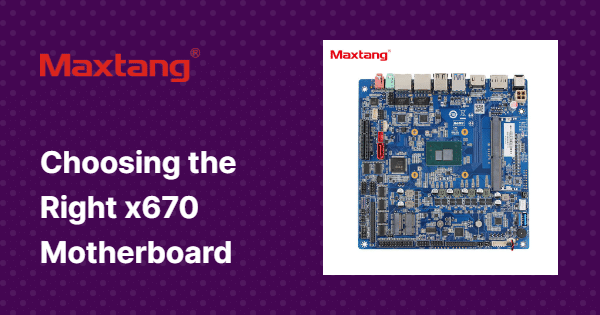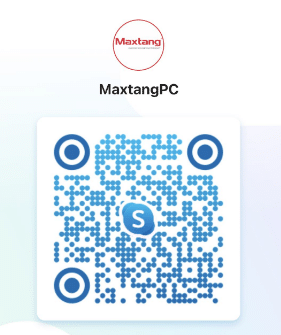Selecting the appropriate motherboard for a PC build can be a daunting task, particularly for individuals new to the process. It is essential to grasp the critical factors involved before reaching a decision.
Within this comprehensive guide focusing on the selection of the suitable x670 motherboard, we will explore significant elements such as processor compatibility, budgetary considerations, expansion slots, and additional relevant aspects.
Upon completion of this article, readers will have acquired a thorough understanding of the key features to look for in a high-quality motherboard and how to avoid typical pitfalls.
1. Understand Your Processor and Socket Type
The selection of an appropriate motherboard commences with a thorough comprehension of the processor being utilized and its corresponding socket type. This ensures optimal performance and compatibility within the system.
The alignment of the processor with the correct socket type serves to avert potential compatibility challenges that may arise if the two components are not harmonious. Various processor iterations often necessitate distinct socket types for seamless operation, underscoring the necessity of conducting comprehensive research and cross-referencing specifications prior to procurement.
The proper fitting of the processor into the socket is imperative for facilitating smooth communication between the processor and the motherboard elements, thereby significantly impacting the overall operational efficiency and speed of the computer system.
2. Consider Your Budget
When choosing a motherboard, it is crucial to take into account your budget in order to strike a balance between performance and cost, aiming to find a cost-effective solution that aligns with your requirements.
An effective strategy to navigate through the extensive range of motherboard choices is to establish a budget. By clearly defining a spending limit, you can streamline your options and concentrate on emphasizing features within that particular price bracket.
For example, if you have a restricted budget, it is advisable to prioritize essential features like ample connectivity ports and compatibility with your selected processor. Conversely, if you have more financial flexibility, you may opt to explore high-end motherboards with advanced capabilities such as overclocking functionalities and multiple PCIe slots.
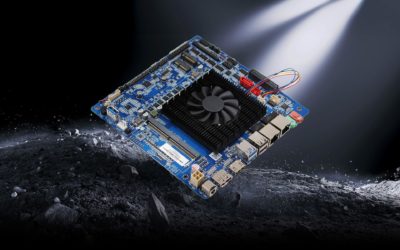
ALN10 Intel® Alder Lake Embedded Motherboard
3. Look at the Number and Type of Expansion Slots
An assessment of the motherboard’s expansion slots is necessary to ascertain its scalability and potential for future upgrades, thereby ensuring adequate support for additional components like graphics cards or storage devices.
Various types of expansion slots are instrumental in accommodating these supplementary peripherals. For instance, PCIe slots are commonly utilized for linking graphics cards, sound cards, and network cards, offering high-speed data transfer capabilities. Conversely, M.2 slots are progressively favored for connecting SSDs, presenting faster read and write speeds. It is imperative to possess a sufficient quantity of these slots to facilitate the seamless addition of more components as technology progresses and requirements evolve.
4. Check for Compatibility with Other Components
It is important to ensure compatibility with other components, such as CPU, RAM, and GPU, by verifying specifications and form factor requirements to facilitate a seamless integration of all parts.
This meticulous assessment is essential to preempt common compatibility issues that may arise during the build process. For instance, mismatched socket types between the CPU and motherboard could lead to a non-functional system. Likewise, selecting RAM modules with incompatible speeds or timings may result in performance instability or bottlenecks.
By cross-referencing compatibility lists and specifications, builders can circumvent these conflicts and ensure a smooth setup. Addressing such issues often involves the selection of replacement components or updating firmware to establish coherence among the different parts.
5. Consider the Number and Type of USB Ports
Examine the USB ports on the motherboard to verify that they align with your connectivity requirements, offering an adequate array of options for peripherals, external storage devices, and other USB-compatible equipment.
The presence of a diverse range of USB ports on the motherboard is critical for effectively linking a variety of devices, such as keyboards, mice, external hard drives, and cameras. The incorporation of USB 3.0 ports guarantees rapid data transfer rates, which are particularly advantageous when transferring large files or expeditiously backing up critical data.
Moreover, the integration of USB-C ports caters to the latest peripheral devices, providing accelerated charging capabilities and heightened compatibility with contemporary technology. Given the escalating dependence on technological resources, the presence of versatile and high-speed USB ports has evolved into a necessity for facilitating efficient multitasking and seamless connectivity.
6. Look at the Number and Type of SATA Ports
Inspect the SATA ports on the motherboard to evaluate its storage capabilities, ensuring compatibility with multiple hard drives, SSDs, and optical drives to meet your storage needs.
The presence of an adequate number of SATA ports on the motherboard is essential for accommodating the increasing demands of your storage requirements. Each SATA port supports varying speeds and functionalities, with SATA 3.0 ports enabling faster data transfer rates compared to SATA 2.0. Having a sufficient number of SATA ports facilitates effortless expansion of storage capacity by enabling the connection of additional storage devices.
In the context of setting up RAID configurations for data redundancy or performance enhancements, the availability of an ample number of SATA ports becomes even more critical. Each SATA port fulfills a significant role in ensuring seamless connectivity and efficient management of data across your storage devices.
7. Consider the Form Factor
Consider the form factor of the motherboard when selecting an appropriate case to ensure proper fit, thereby optimizing space utilization and airflow within the system. The form factor significantly influences the overall size and layout of the PC build. ATX motherboards, being larger in size, provide more expansion slots and connectivity options, necessitating a spacious case for accommodation. On the other hand, Micro-ATX strikes a balance between size and features, allowing it to fit into compact cases with reasonable expansion capabilities. Mini-ITX, the smallest form factor, is particularly suitable for compact builds with limited space constraints. It is essential to factor in your build requirements, such as the need for multiple GPUs or extensive storage, to determine the most appropriate form factor for your specific setup.
8. Look at the Quality of the Components
It is imperative to assess the quality of components utilized in the motherboard, with a focus on attributes such as durability, reliability, and performance to guarantee the establishment of a stable and enduring system build.
Within the realm of motherboards, one particularly critical component deserving attention is the Voltage Regulator Modules (VRMs). VRMs play a pivotal role in furnishing the CPU with consistent power delivery. Employing high-caliber VRMs is fundamental in mitigating overheating risks and ensuring the seamless operation of the system.
Conducting a thorough examination of the capacitors present on the motherboard is paramount, given their function in storing and discharging electrical energy. The integration of superior quality capacitors is instrumental in optimizing system performance and longevity.
Equally crucial is the heatsink, tasked with dissipating the heat generated by various components. A well-crafted heatsink augments thermal efficiency and shields components from the adverse effects of overheating.
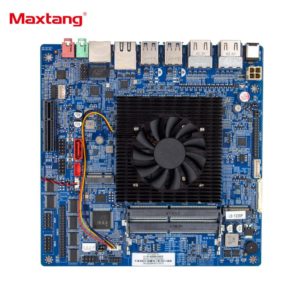
small mother board
9. Check for Overclocking Capabilities
For individuals seeking to enhance the performance of their systems, it is advisable to validate the overclocking capabilities of the motherboard and ascertain its support for adjusting CPU and RAM settings in order to unlock additional processing power.
Overclocking is the act of modifying a computer’s hardware settings to operate at speeds higher than those specified by the manufacturer. Through overclocking key components like the CPU and RAM, users can significantly enhance the system’s performance for demanding tasks such as gaming, video editing, and rendering.
To discern motherboards with robust overclocking functionalities, it is recommended to select models that feature advanced power delivery systems, effective cooling mechanisms, and BIOS configurations that facilitate convenient customization. Opting for a motherboard with premium-grade components and a reliable VRM design can guarantee stable overclocking operations and deliver optimal performance improvements.
10. Consider the Brand and Customer Support
When making a decision, it is important to consider the brand’s reputation for quality and reliability, as well as the availability of comprehensive technical support and warranty coverage.
Respected brands prioritize ensuring that their products adhere to high-quality standards, fostering trust and reliability among customers. The provision of technical support is a critical aspect in improving the overall customer experience, as timely assistance can swiftly address any issues that may arise. Warranty benefits provide customers with peace of mind, assuring them that the brand stands by its products. In the current competitive market landscape, selecting a well-established brand with a strong reputation not only guarantees a superior product but also ensures dependable after-sales support for a seamless customer journey.
What Is a Motherboard and Why Is It Important?
A motherboard plays a pivotal role as the foundational structure of a computer system, facilitating the interconnection of vital components and enabling seamless communication among them. Therefore, it stands as a critical element that significantly influences the functionality and performance of the system.
The selection of a motherboard holds substantial importance in the overall performance of a PC assembly. Key determinants such as the chipset, socket type, supported RAM speeds, and expansion slots directly impact the system’s capabilities. Opting for a suitable motherboard can guarantee system stability, compatibility, and potential for future upgrades. Conversely, choosing an inadequate motherboard may constrain potential upgrades or lead to system instability.
It is imperative to carefully choose a motherboard that aligns with the intended usage of the system, whether geared towards gaming, content creation, or daily computing tasks, to achieve optimal performance and ensure the longevity of the PC.
What Are the Different Types of Motherboards Available?
Motherboards are available in different types, such as ATX, Micro-ATX, and Mini-ITX, each tailored to meet diverse build requirements and form factor preferences.
ATX motherboards, recognized for their larger dimensions, typically provide a greater number of expansion slots for additional components like graphics cards, storage drives, and RAM. This makes them well-suited for high-performance gaming setups or workstations that necessitate multiple add-in cards. However, due to their larger size, they may not fit comfortably in compact cases.
Conversely, Micro-ATX boards strike a balance between size and expansion capabilities, offering versatility for mid-range builds. While they offer fewer expansion slots compared to ATX, they are often more cost-effective and compatible with a wider array of cases.
Mini-ITX motherboards are the smallest among the three, designed for compact builds and Home Theater PCs (HTPCs) where space is limited. Despite their limited expansion options due to their compact size, they are energy-efficient and well-suited for small form factor systems.
What Are the Key Factors to Consider When Choosing a Motherboard?
When considering the selection of a motherboard, it is imperative to evaluate key factors that will impact its performance and compatibility. These factors include the chipset, which plays a vital role in ensuring compatibility with the processor and can significantly influence performance. It is essential to match the processor with a compatible chipset to achieve optimal efficiency. For example, pairing an Intel Core i7 processor with a motherboard that supports its designated chipset will result in enhanced overall performance and stability.
Furthermore, the availability and variety of ports on a motherboard are crucial for facilitating connectivity with external devices such as peripherals, storage drives, and monitors. The types of ports provided will determine the functionality and usability of the system, making it essential to consider the range of ports available when selecting a motherboard.
How Can a Beginner Determine the Compatibility of a Motherboard?
The process of ascertaining motherboard compatibility entails referencing component specifications and utilizing installation guides to ensure a seamless integration and prevent potential hardware conflicts.
One helpful tip for identifying compatible components is to verify the socket type of the CPU, as it must align with the socket on the motherboard. Careful examination of the form factor of both the motherboard and the case is imperative to ensure proper fit. Furthermore, confirming that the RAM type and speed are supported by the motherboard is essential. Certain motherboards may necessitate a specific power supply unit (PSU) wattage; therefore, verifying this requirement is crucial. Seeking guidance from online forums or PC building communities can offer valuable insights and recommendations regarding compatible components.
What Are the Common Mistakes to Avoid When Choosing a Motherboard?
Frequent errors in selecting a motherboard may arise from the oversight of compatibility issues, neglect of future expansion requirements, and a lack of consideration for component quality. These oversights can potentially result in concerns regarding system performance and stability.
One prevalent mistake is the failure to verify the socket type compatibility between the motherboard and the CPU, which can lead to improper system boot-up. To mitigate this issue, it is essential to always confirm that the socket of the motherboard aligns with the CPU intended for use.
Another error involves not verifying whether the RAM type and speed are supported by the motherboard, which can result in system instability. To circumvent this problem, individuals should consult the motherboard’s specifications and select the RAM accordingly.
In situations where compatibility issues emerge, a useful troubleshooting tip involves updating the motherboard BIOS to the most recent version, as this can enhance compatibility with various components.
What Are the Key Features to Look for in a High-Quality Motherboard?
High-quality motherboards are characterized by essential features such as robust VRMs that provide stable power delivery, a wide array of connectivity options, sophisticated cooling solutions, and compatibility with overclocking, effectively meeting the needs of performance enthusiasts and discerning users.
These premium motherboards are furnished with top-tier VRMs that guarantee consistent power distribution to the CPU, ensuring steadfast performance even when managing intensive workloads. Moreover, sophisticated cooling mechanisms like heat sinks and fan headers effectively dissipate heat, thus preserving optimal temperatures for the system’s components. The inclusion of overclocking support in these motherboards enables users to enhance their system’s performance beyond factory settings, thereby unlocking the hardware’s full potential and improving operational speed and responsiveness.
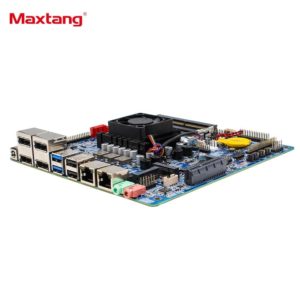
best mini itx amd motherboard
Frequently Asked Questions
What is the x670 Motherboard and why is it important for beginners to choose the right one?
The x670 Motherboard is a type of computer motherboard that is specifically designed for AMD processors. It is important for beginners to choose the right one because it determines the compatibility and performance of the entire computer system.
What factors should beginners consider when choosing an x670 Motherboard?
Some important factors to consider include the processor socket type, chipset, memory support, expansion slots, and connectivity options. It is also important to consider your budget and future upgrade plans.
How do I know which processor socket type is compatible with the x670 Motherboard?
The x670 Motherboard is only compatible with AMD processors, so you should look for the AM4 socket type. However, make sure to double check the specific model of the motherboard to ensure compatibility with your chosen processor.
What is the difference between the x570 and x670 Motherboard?
The x570 and x670 Motherboards are both designed for AMD processors, but the x670 is a newer and more advanced version. It offers better performance, more features, and improved compatibility with newer processors.
How can I determine the memory support of an x670 Motherboard?
The memory support of an x670 Motherboard is determined by the number of RAM slots and the maximum amount of memory it can support. It is important to choose a motherboard with enough RAM slots and support for the amount of memory you need for your computer usage.
What are some popular x670 Motherboard brands for beginners?
Some popular brands for beginners include ASUS, Gigabyte, MSI, and ASRock. These brands offer a variety of options with different features and price points, making it easier for beginners to find the right fit for their needs and budget.

